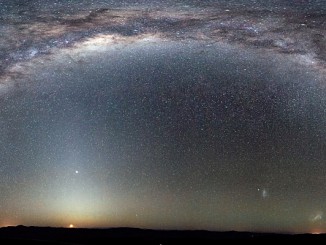
47 Tucanae


A middleweight black hole hides at center of giant star cluster
All known black holes fall into two categories: small, stellar-mass black holes weighing a few Suns, and supermassive black holes weighing millions or billions of Suns. Astronomers expect that intermediate-mass black holes weighing 100 – 10,000 Suns also exist, but so far no conclusive proof of such middleweights has been found. Astronomers have announced new evidence that an intermediate-mass black hole (IMBH) weighing 2,200 Suns is hiding at the center of the globular star cluster 47 Tucanae.

Hubble reveals NGC 299 within the Small Magellanic Cloud
It may be famous for hosting the Small Magellanic Cloud (SMC) and 47 Tucanae, the second brightest globular cluster in the night sky, but the southern constellation of Tucana (The Toucan) also possesses a variety of unsung cosmic beauties. One such beauty is NGC 299, an open star cluster located within the SMC just under 200,000 light-years away.

Millisecond pulsars in globular cluster 47 Tucanae
Pulsars are rapidly spinning neutron stars that emit electromagnetic radiation in a sweeping, lighthouse-like beam. They are dramatic, powerful probes of supernovae, their progenitor stars. Astronomers have measured the orbital parameters of four millisecond pulsars in the globular cluster 47 Tucanae and modelled their possible formation and evolution paths.


Strange globular cluster recalls Milky Way’s infancy
When our galaxy was born, around 13,000 million years ago, a plethora of clusters containing millions of stars emerged. But over time, they have been disappearing. However, hidden behind younger stars that formed later, some old and dying star clusters remain, such as the so-called E 3. European astronomers have now studied this testimony to the beginnings of our galaxy.

Discovery of white dwarf companions of millisecond pulsars
When a massive star ends its life in a spectacular supernova explosion, it can leave behind a rapidly spinning neutron star with a period of 1-10 milliseconds. Such objects that emit electromagnetic radiation in a lighthouse-like beam sweeping past the Earth are known as millisecond pulsars. CfA astronomers have identified white dwarf companions of two more millisecond pulsars in the spectacular globular cluster 47 Tucanae.

